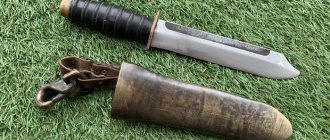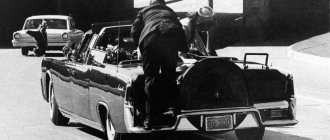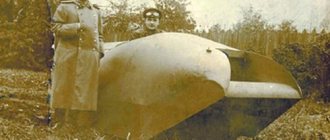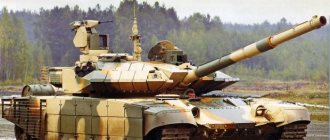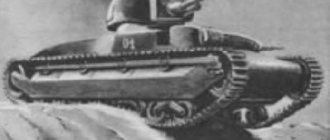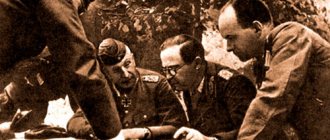The last lot on the Black Market 2022. Is it worth 10,000,000 silver or is it a complete failure.
Greetings, tankers! Wotpack is with you and in connection with the end of the Black Market and the last auction for silver, we decided to prepare a short review of the Soviet light tank tier 3 BT-SV .
Let’s say right away that this is a very rare unit and has been put on public sale several times:
- 2015 in a set for 5499 rubles;
- 2019 in a set for 3256 rubles;
- and in 2022, an individual offer came to buy in the premium store for 1925 rubles and receive a BT-SV as a gift.
So this tank is a find for collectors. Now let's get to know him in more detail.
The history of the creation of the Stalin-Voroshilov Fast Tank
In 1937, the BT-7 tank was considered a very successful vehicle, and its speed of 72 km/h on wheels is good even today. However, due to the tank's 22 mm frontal armor, it was very vulnerable, especially since the French by that time had combat vehicles with 45 mm armor.
That is why in 1937, Mariupol Plant No. 48 began designing a new tank based on the BT-7 with more advanced armor protection. According to one version, the team of engineers took the French tank FCM 36 as the basis for the project. However, there is an opinion that the designers, on the contrary, considered this tank an example of how not to do it, since the French tank was difficult to manufacture and did not allow for the normal arrangement of internal components and had difficult access to the tracks for repairs.
At the end of the year, a prototype BT-SV was already built for sea trials, made of 10-12 mm steel instead of the designed 20-25 mm cemented armor or 40 mm homogeneous armor. After testing, several changes were made to the design of the tank, calling the updated version BT-SV-2.
In addition, during the tests it became clear that the weight of the vehicle with the required armor would be about 25 tons, which is twice as much as the BT-7. To test how the chassis could withstand such a load, it was planned to build a BT-SV-2 with normal armor, but the project was not implemented, and work on the BT-SV stopped due to the arrest of chief designer Tsyganov in early 1938.
Tank photos
Game tactics
We are being penetrated, we have a small one-time damage, we have poor visibility. This means that we must be as maneuverable as possible, constantly on the move. We go around the opponents on the flanks, use someone else's light. Shot - change position. Speed allows you to raid enemy respawns in search of AFKash tanks and PTsheks.
Good modules for the vehicle are related to increasing the rate of fire - ventilation and adrenaline. In this case, the tank's efficiency increases noticeably.
TTX BT-SV
general information
- Combat weight - 25 tons;
- The layout is classic;
- Crew – 4 people;
- Year of production – 1937;
- Quantity issued – 1 piece.
Dimensions
- Case length – 5620 mm;
- Case width – 2800 mm;
- Height – 2175 mm;
- Ground clearance – 380 mm;
Armament
- Caliber and brand of gun - 45 mm 20K;
- Gun type - rifled;
- Barrel length - 46 calibers;
- Gun ammunition - 140 rounds;
- Machine gun - 7.62 mm DT, 1386 rounds.
Mobility
- Engine type - M-17T;
- Engine power – 500 hp;
- Highway speed - 51.9 km/h;
- Speed over rough terrain – 22 km/h;
- Cruising range on the highway – 120 km;
- Cruising range over rough terrain – 110 km;
- Wheel formula - 8×2/2;
- Pendant type: Christie pendant;
- Specific ground pressure - 0.752 kg/cm²;
- Climbability – 32 degrees;
- The wall to be overcome is 0.9 m;
- The ditch to be overcome is 1.65 m;
- Fordability - 1.2 m.
Tank in culture
The BT-SV tank can be found in the computer game World of Tanks, where it is a premium light tank of tier 3 and is provided with the purchase of a boxed edition of the game. The tank from the game has a mass of 13.1 tons and bulletproof armor.
More material on the topic
- M4 Sherman
- New deadly tank T90MS
KV-13 (object 233)
The KV-13 is the first major independent work of the Experimental Tank Plant. This tank was ideally supposed to replace the KV and T-34, that is, it was planned to be produced in double volumes instead of these two tanks. The KV-13 was called a “heavily armored medium tank.” According to the plan, its weight was supposed to be no more than 30 tons, with fairly high requirements for armor. With all this, the tank should not have been too difficult to manufacture. These goals were achieved by making the tank more streamlined, and by making almost all the main structural elements cast. Due to this, the armor of the tank was even superior to the serial KV-1. In addition, it practically did not use non-ferrous metals, which during the war were simply worth their weight in gold. The first prototype of the KV-13 was produced in the spring of 1942. Even before sea trials, such shortcomings of the tank as the commander's workload and poor visibility were noted. In the fall, the first field tests of the tank were carried out, which showed the extreme unreliability of the vehicle. The KV-13 broke down constantly, just leaving the factory, and even constant repairs and design improvements did not help. When some reliability was finally achieved, it turned out that the KV-13 was not sufficiently protected from the 88 mm cannon. It was necessary to increase the thickness of the armor, and this would make the tank much heavier. It was decided to eliminate all the shortcomings in a new tank, which was laid down in two copies at once. However, the factories were busy with the production of the T-34 and the modernization of the KV-1, so production was delayed. When the two prototypes were finally completed, they were significantly heavier, but still quite maneuverable. However, work on the KV-13 was completely stopped, and these two prototypes became the basis for the creation of a new tank, the IS-1.
Object 292
Object 292 is an experimental tank developed by the Kirovsky design bureau) and scientists from the All-Russian Scientific Research Institute Transmash. On the basis of the T-80U tank chassis, a new turret with a 152 mm LP-83 cannon and a new loading mechanism was installed. A smooth-bore 152-mm cannon was installed, its ballistic characteristics significantly superior to the previous 125-mm cannon, and the new cannon was made in dimensions slightly larger than the standard one. A new fighting compartment of the tank was created, which could be installed on the T-80 chassis without changes to the chassis design. The final stage of development of the facility occurred in the early 90s. During this period, funding for work on a rifled version of the 152 mm gun was radically reduced. In 1990, a prototype of the tank was ready, with the exception of the loading mechanism. In 1991, firing tests began at the Rzhevsky training ground. As a result of the tests, positive conclusions were obtained. However, the tank never went into production. Nevertheless, the developments remain.
Object 906 (PT-85/PT-90)
Object 906 (PT-85/PT-90) is a Soviet experimental light amphibious tank. Development of the Volgograd Tractor Plant. The tank was developed in two versions: PT-85 (with an 85 mm cannon) and PT-90 (with a 90 mm cannon). In both versions, the transportable ammunition amounted to 40 rounds, of which 15 were loaded into the mechanized stowage of the automatic loader. The gun had a two-plane weapon stabilizer. With an engine power of 300 hp. the tank could accelerate to 80 km/h on the highway. The speed afloat was about 10 km/h. In 1961-1962, six prototypes of the PT-85 were manufactured, two of which were tested at the NIIBT test site in Kubinka in 1963, but the vehicle was never accepted for service.
A-40 or LT “flying tank”
In the summer of 1942, a prototype of the A-40 flying tank or LT “flying tank” based on the serial T-60 was released. and the tank was attached to a biplane wing box with a double-boom tail unit, which had a span of 18 meters and a total wing area of 85.5 square meters. m. According to calculations, the tank was supposed to take off, towed by a TB-3RN heavy bomber. Upon landing, the tank was easily freed from the wings and could immediately enter the battle. The first flight took place on September 2, 1942, but the TB engines suddenly began to overheat and the tank had to be uncoupled. The A-40, gliding, landed at the nearest airfield, which caused quite a stir, and a combat alert was declared. This is how the story of this unusual tank ended.
"Black Eagle" (Object 640)
Black Eagle (Object 640) is a Russian project of a promising main tank, developed in the 1990s by the Omsk Transport Engineering Design Bureau. The prototype was first demonstrated in 1997 and was a modified chassis of the main T-80U tank with a new design turret installed on it. The project included arming the tank with a 125 mm cannon, a coaxial 7.62 mm machine gun and a remote anti-aircraft gun with a 12.7 mm Kord machine gun. However, the design of the tank included the possibility of a larger caliber gun - up to 152 mm. With a combat weight of 48 tons, the tank was supposed to be equipped with a new gas turbine engine with a power of more than 1,500 hp. With. Thus, the specific power of the tank exceeded 30 hp. s./t and, as a consequence of this, the dynamic characteristics of the “Object 640” should have significantly exceeded the characteristics of Western third-generation tanks with a specific power of 20 - 25 hp. s./t. Subsequently, a prototype was created with a turret mounted on a seven-roller chassis. The tank was not mass-produced. During demonstrations of prototype tanks at exhibitions, the tank's turret was always covered with a dense camouflage net. On April 28, 2011, the former first deputy of the Main Armored Directorate of the Russian Ministry of Defense, Major General Yuri Kovalenko, announced that the developments of the Black Eagle would be used in the new main Armata tank.
Well, write in the comments which of these tanks impressed you the most? And if you were interested, then rate this article and register on the site. There will be even more interesting things to come.
What is your opinion?
Rate the article on a 5-point scale! ( 1 ratings, average: 5.0 out of 5)
IS-7
IS-7 is a Soviet experimental heavy tank. Developed in 1945-1947. Like its predecessors, designed to break through powerful enemy defensive lines, the IS-7 had excellent armor protection. The most powerful tank of its time and one of the heaviest among Soviet tanks. However, production was limited to only six prototypes and a small number of pre-production vehicles produced in 1949. The main armament of the tank was a powerful 130-mm S-70 tank rifled gun with a barrel length of 57.4 calibers and an initial speed of a 33.4-kilogram armor-piercing projectile of 900 m/s, developed on the basis of a 130-mm naval naval gun. The gun had a vertical wedge semi-automatic breech, was equipped with a single-chamber mesh muzzle brake, a fire control system and an electrically driven loading mechanism, similar to naval artillery installations. It was not adopted by the Soviet Army, but many of the technical solutions first used on this tank were subsequently successfully used in production vehicles.
Object 279
Object 279 is a Soviet heavy tank developed in 1957 in Leningrad by a design bureau headed by Zh. Ya. Kotin. The tank was intended to break through prepared enemy defenses and operate in areas of terrain difficult for conventional tanks. Due to the unusual design of the chassis, the average pressure of the tank on the ground was only 0.6 kgf/cm², that is, it was close to the same parameter of a light tank. The armament consisted of a 130-mm M-65 cannon and a coaxial 14.5-mm KPVT machine gun. Thanks to original technical solutions, the chassis of this 60-ton tank was even 0.5 tons lighter than that of the T-10M tank. However, the design of the chassis was difficult to operate and repair in the field, limited the possibility of reducing the height of the tank during further modernization and had large power losses in the tracked propulsion system, especially when moving in muddy roads. Another serious drawback of the four-track chassis was the turning resistance, which was 12 times greater than for a similar tank made according to the classical design.
IT-1 (“Tank Destroyer”, “Object 150”)
IT-1 (“Tank Destroyer”, “Object 150”) is a Soviet missile tank that entered service in 1968. It is the first and only “pure” missile tank adopted for service, that is, missiles are the main weapon of the tank. The IT-1 was built on the prototype Object 140 medium tank and fired specially designed 3M7 Dragon anti-tank missiles from a turret-mounted mount. The missile control is radio command, semi-automatic. Effectiveness of hitting a target: from the first or second shot. The firing range during the day ranged from 300 to 3300 m, at night - from 400 to 600 m. Armor penetration at an angle of 60° was 250 mm. The tank was put into service in 1968. The IT-1 was in service with the Soviet Army for three years. During testing and operation, the missile system showed high reliability - up to 96.7%. However, its design shortcomings: large dimensions and weight, outdated element base, large dead zone, lack of a gun on the tank, etc. were the reason for the IT-1 being removed from service. And although 110 missile tanks were produced, large-scale production never followed.

